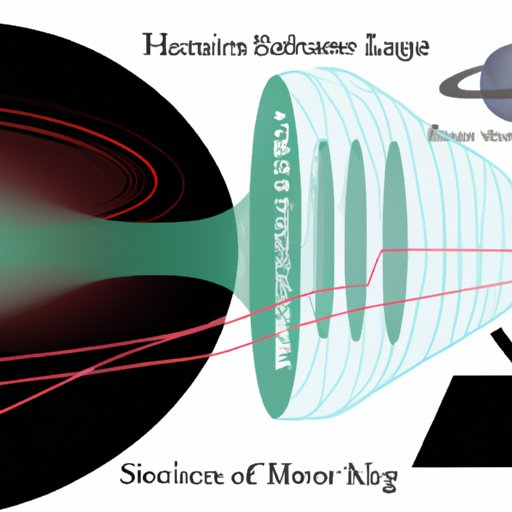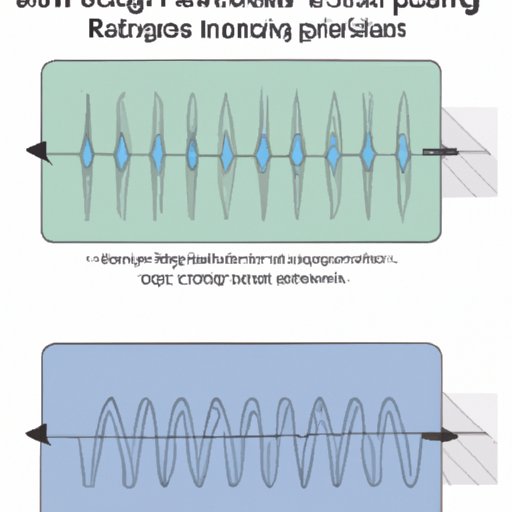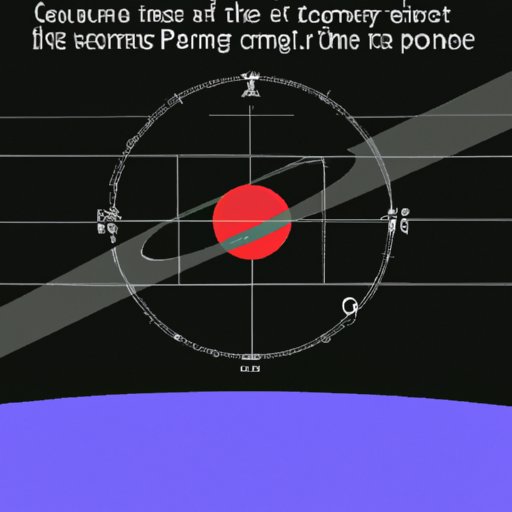Introduction
Sound is one of the most important senses humans use to perceive their environment. But what exactly is sound? According to the American Heritage Dictionary, sound is “vibrations transmitted through an elastic material or a gas, such as air, with frequencies in the approximate range of 20 to 20,000 hertz and capable of being heard by human organs of hearing”. In other words, sound requires a medium (such as air) to be transmitted and interpreted by the human ear. So, why can’t sound travel in space? This article will explore the physics behind why sound cannot travel in space.

Exploring the Physics Behind Why Sound Cannot Travel in Space
In order to understand why sound cannot travel in space, it is important to first examine how sound is transmitted. Sound waves are created when an object vibrates, causing the particles in the medium around it to move back and forth. This causes the particles to compress and rarefy, creating a pressure wave that moves away from the source. The speed of sound is determined by the properties of the medium through which it is travelling, as well as the temperature of the medium.
When examining the properties of sound waves, it is important to note that they are longitudinal waves, meaning that the particles in the medium move in the same direction as the wave. Sound waves also have a frequency, which is measured in Hertz (Hz). The higher the frequency, the higher the pitch of the sound. Furthermore, sound waves also have a wavelength, which is the distance between two successive points of the same phase on the wave.
So, why does sound need a medium to travel? Put simply, sound waves require a medium to transfer energy from one point to another. When the particles in the medium vibrate, they create a pressure wave that transmits energy from the source to the receiver. Without a medium, the energy created by the vibrations of the source would dissipate into the surrounding environment.
The Impact of Vacuum on the Ability to Transmit Sound Waves
Vacuum refers to a region where there is no matter present. Since sound waves require a medium to travel, it follows that they cannot be carried in a vacuum. This is because there are no particles present in the vacuum that can vibrate and create a pressure wave. As a result, sound waves cannot propagate through a vacuum.
It is important to note that this does not mean that sound is completely absent in outer space. Astronauts in space have reported hearing various sounds, such as the rumble of a rocket engine or the hum of a spacecraft. However, these sounds are not transmitted through the vacuum of space; rather, they are transmitted through the walls of the spacecraft.
Examining How the Absence of Mediums Impacts Sound Transmission
It is important to understand that the absence of a medium does not just impact the ability to transmit sound waves in a vacuum. In fact, sound waves can also be affected by the presence of different mediums. For example, sound waves travel faster in air than in water, and slower in solids than in liquids.
Furthermore, sound waves behave differently depending on the type of medium they are travelling through. In air, sound waves are able to reflect off of objects and bounce around corners. This is known as reverberation. However, this does not occur in a vacuum, as there are no particles present to reflect the sound waves. As a result, sound waves cannot be transmitted in a vacuum.

Investigating Why Sound Waves Require a Medium for Propagation
In order to fully understand why sound waves require a medium for propagation, it is important to examine how sound is created. Sound is produced when an object vibrates, causing the particles in the medium around it to move back and forth. This creates a pressure wave that propagates away from the source. The pressure wave is then detected by the human ear, allowing us to hear the sound.
However, in order for the pressure wave to be transmitted, the particles in the medium must be able to vibrate. Without a medium for the particles to vibrate in, the pressure wave cannot be created and sound cannot be transmitted.

Understanding How Sound is Blocked by the Vastness of Space
Another factor that contributes to why sound cannot travel in space is the vastness of space itself. Sound waves are blocked by large distances, as the energy of the sound wave dissipates over time. This is due to the inverse square law, which states that the intensity of a sound wave decreases inversely proportional to the square of the distance from the source.
In addition, sound waves are also blocked by obstacles, such as planets or asteroids. This is because sound waves require a medium to travel, and any obstacle that is blocking the path of the sound wave will prevent the sound wave from propagating.
Conclusion
In conclusion, sound cannot travel in space because it requires a medium to propagate. This is due to the fact that sound is created when an object vibrates, causing the particles in the medium to move back and forth and create a pressure wave. Furthermore, sound waves are blocked by the vastness of space, as well as obstacles that block the path of the sound wave. Understanding why sound cannot travel in space is an important part of understanding the physics of sound.
This article has explored the physics behind why sound cannot travel in space. From understanding how sound is transmitted to examining the properties of sound waves, it has provided an in-depth look at why sound waves require a medium for propagation and how sound is blocked by the vastness of space. Further research could focus on the effects of different mediums on sound transmission, as well as the ways in which sound is used in space exploration.
(Note: Is this article not meeting your expectations? Do you have knowledge or insights to share? Unlock new opportunities and expand your reach by joining our authors team. Click Registration to join us and share your expertise with our readers.)
